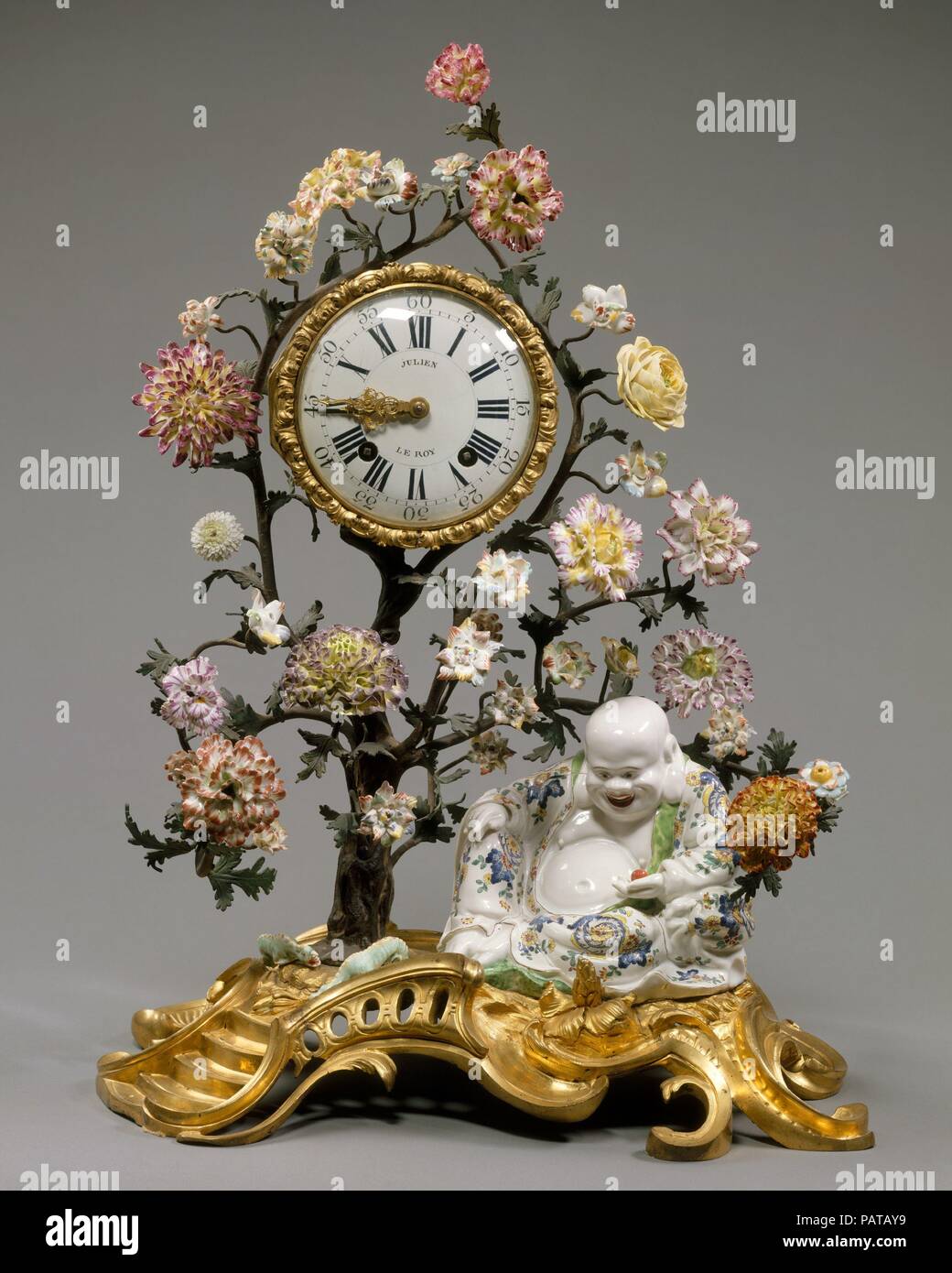Mantel clock. Culture: French, Paris with French, Chantilly case. Dimensions: Height: 21 1/2 in. (54.6 cm). Maker: Clockmaker: Julien Le Roy (French, Tours 1686-1759 Paris); Case maker: Chantilly (French). Date: ca. 1745-49. The figure of Pu-tai Ho-shang, a Chinese apostle of the Buddha, is a literal copy made at Chantilly in the 1740s of a blanc de chine model that originated at Tê-hua in the Fukien province of China and was exported to the West in the first half of the eighteenth century. Augustus the Strong owned a number of examples, presumably those described in the 1721 inventory of the

Image details
Contributor:
Album / Alamy Stock PhotoImage ID:
PATAY9File size:
40.4 MB (1.4 MB Compressed download)Releases:
Model - no | Property - noDo I need a release?Dimensions:
3360 x 4200 px | 28.4 x 35.6 cm | 11.2 x 14 inches | 300dpiPhotographer:
AlbumMore information:
This image could have imperfections as it’s either historical or reportage.
Mantel clock. Culture: French, Paris with French, Chantilly case. Dimensions: Height: 21 1/2 in. (54.6 cm). Maker: Clockmaker: Julien Le Roy (French, Tours 1686-1759 Paris); Case maker: Chantilly (French). Date: ca. 1745-49. The figure of Pu-tai Ho-shang, a Chinese apostle of the Buddha, is a literal copy made at Chantilly in the 1740s of a blanc de chine model that originated at Tê-hua in the Fukien province of China and was exported to the West in the first half of the eighteenth century. Augustus the Strong owned a number of examples, presumably those described in the 1721 inventory of the Japanese Palace in Dresden as sitting pagods.[1] This Chantilly version may be compared to a blanc de chine figure, mounted, like this, in French gilt bronze of about 1745-49 in the Walters Art Gallery, Baltimore.[2] Thirteen of the flowers are original and are of soft-paste porcelain made at Chantilly; the remainder are replacements in hard-paste porcelain. The clock has a rack-and-nail quarter-striking movement; the movement and hands are original; the pendulum suspension has been replaced with a nineteenth-century Brocot suspension, and the pendulum is missing. [Bill Rieder, 1984] Footnotes: [1] P. J. Donnelly, Blanc de Chine, New York, 1969, p. 160. [2] F. J. B. Watson, Chinese Porcelains in European Mounts (exhib. cat.), New York, China House Gallery, 1980, no. 5. Museum: Metropolitan Museum of Art, New York, USA.